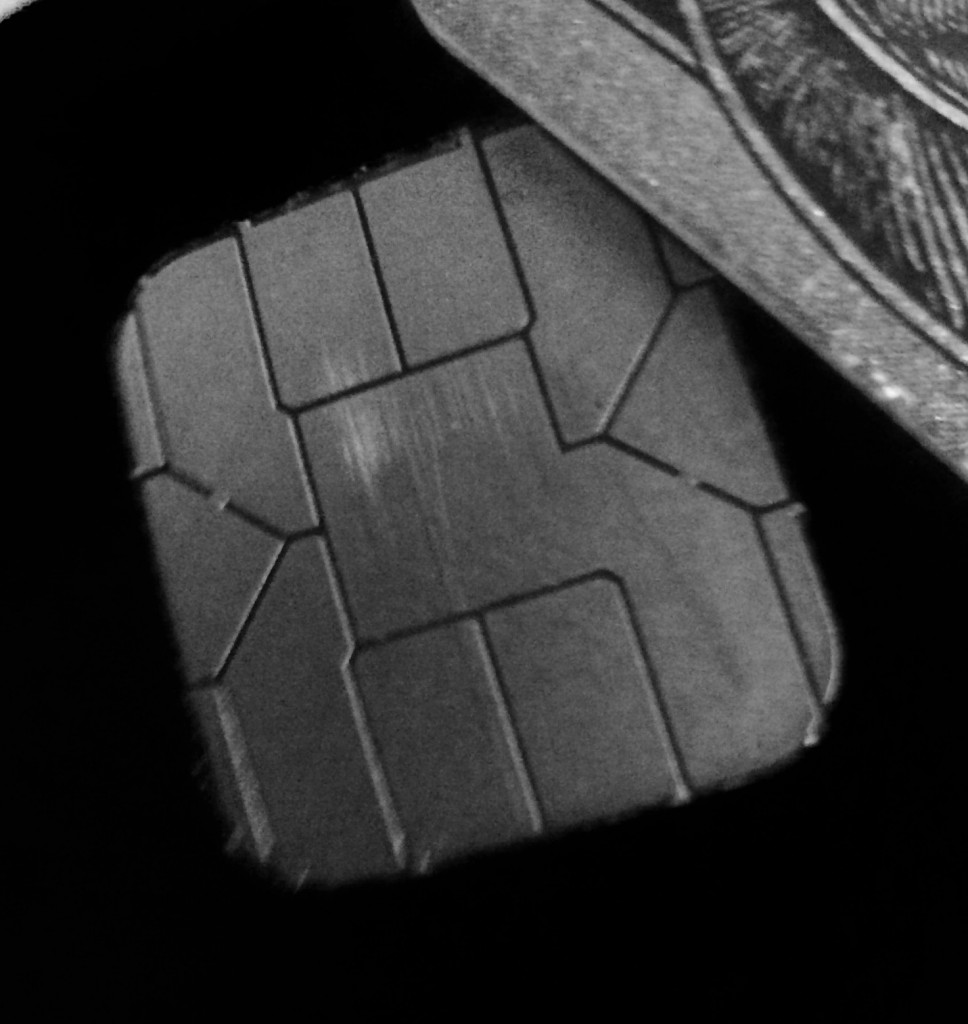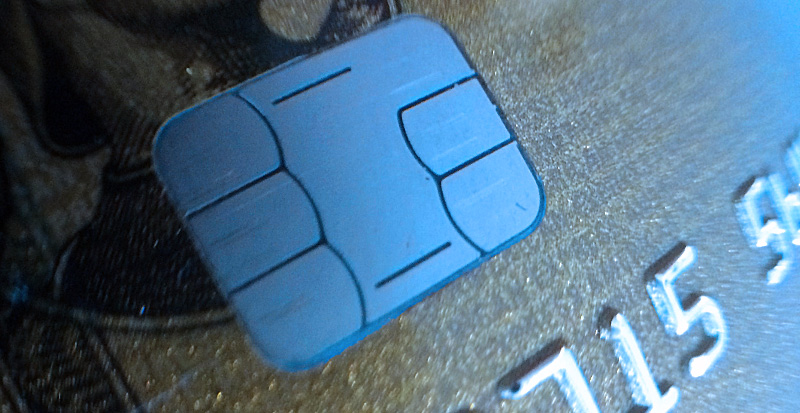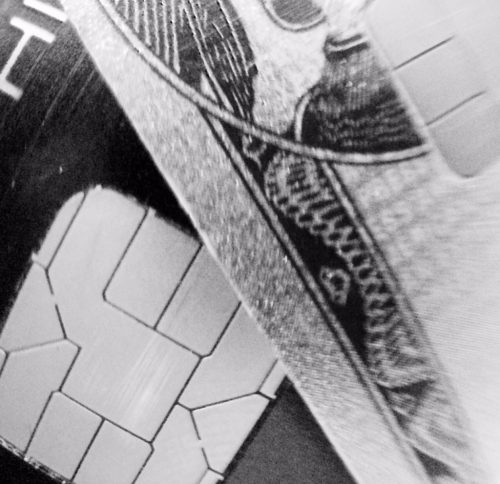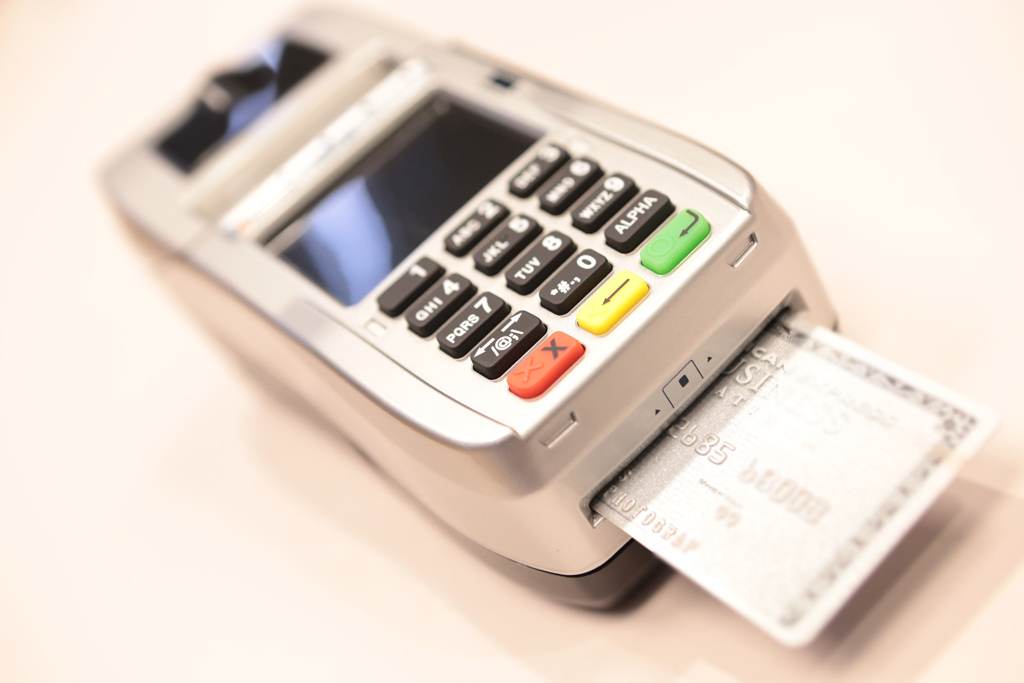A Sky Without Limits, or Infinity and EMV
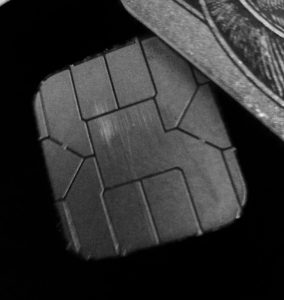 Chicken Little once said that the sky is falling. Yet it still remains intact above us. So while the transition from magnetic stripe to EMV might seem like a shift of cataclysmic proportions, the sky is not falling. Your company will successfully transition from magnetic stripe to EMV (many already have), and next time you look outside your window, you’ll see the billowy clouds resting above, and not on the ground.
Chicken Little once said that the sky is falling. Yet it still remains intact above us. So while the transition from magnetic stripe to EMV might seem like a shift of cataclysmic proportions, the sky is not falling. Your company will successfully transition from magnetic stripe to EMV (many already have), and next time you look outside your window, you’ll see the billowy clouds resting above, and not on the ground.
Yet we also understand that with anything new comes fear. It’s normal. So we’ve put together a few facts to calm your nerves. We want you—the sagacious business owner that you are—to continue to make calm, smart decisions over the course of the transition.
Are you with us? Well, here goes:
- A transaction using EMV technology will take around 60 seconds compared to under 2 seconds with a magnetic stripe card. Magstripe cards are swiped and provide the terminal with the credit card number and expiration date, which can be easily copied by a card reader. EMV terminals, on the other hand, require customers to “dip” the chip and verify customer data, which takes just a short while longer. During this time, the Chip and Terminal begin a conversation. Chip says, “Please authorize this transaction.” Terminal replies, “I’ll need to make sure you’re valid. I’ll also need to provide your card with a special code unique to this transaction because we can’t have any fraudsters trying to take your info.” Chip responds, “Sounds great.” Terminal says, “Now please sign, or enter your pin number.” EMV takes a few more seconds than a magstripe transaction, but your data is more secure.
- Don’t panic. Although EMV has been adopted in Europe for over a decade, cards in the US still have a magnetic stripe. Card companies have accounted for the ongoing transition by allowing terminals to still accept magnetic stripe cards. Card issuers expect the full transition to take anywhere from three to five years.
- The term “liability shift” sounds pretty intense, like if you’re not prepared, the earth will shift, and you’ll fall off the edge of it. Oh, Copernicus. Well, flat-earth jokes aside, the liability shift is not that cruel. It is simply a method to eliminate fraud. Starting October 2015, the party—either the business or banking institution—with the lesser technology will be responsible for the cost of fraud. Instead of thinking of the liability shift as a way for others to make money off of your hard work, think of it instead as a way to ensure all parties are working together to eliminate fraud, which cost US consumers $16 billion last year alone.
In short, the sky is not falling, and EMV is not the end of the world. Instead, it seems to be the beginning to new possibilities for business owners. It might be an uncharted territory, but EMV will provide companies with the tools to chart their own course by allowing them to directly address fraud, a concern that leaves many involved feeling powerless. So next time you look at the sky, we at COCARD hope that you view it with possibility, and nothing less than that.
Read MoreRead MoreThe Truth About EMV!
True. Bats see just fine, and in spite of the idiom “blind as a bat”, bats really have no reason to serve as the benchmark for people with less than perfect eyesight.
Popular myths aside, fall is indeed upon us, which means that the start date of October 1st for the liability shift is near. Are you prepared?
To test your EMV preparedness, see if you can determine whether each statement is true or false.
There really is no proof that EMV is a safer way to protect data.
False, false, and false. Let’s look at two case studies. Since introducing EMV technology in 2004, the United Kingdom reported 62% less fraud in 2013. Canada has also reduced fraud losses to $29.5 million since transitioning to EMV technology. Fraud in Canada is down 79% from losses in 2009 ($142 million). With EMV technology responsible for the significant decrease in fraud in the UK and Canada, the technology aims to also decrease fraud in the United States as well, which currently accounts for nearly half of fraud worldwide.
All businesses—small and large—should be EMV-compliant.
True. No business is too small to adopt EMV technology. While it might be assumed that businesses with larger sales should adopt this technology, small businesses should also be sure to protect their sales as well. Leave it to a pesky fraudster to think ahead and target a small business because the merchant assumed that fraudsters only targeted larger companies. Prevent being caught off guard by being one step ahead of those who want to steal from you.
Adopting EMV technology is expensive.
For the business owner that thinks long term, false. The average cost of an EMV terminal is between $400 and $700. The average bill on a fraudulent card is $399. You do the math. While one fraudulent transaction probably won’t destroy you, starting October 1st, you, and not the associated bank, will be responsible for repaying losses resulting from fraud if your business is NOT EMV compliant. You will also be penalized for the fraud that could have been avoided by installing an EMV card terminal. When you add it all up, $400 to $700 is a small investment compared to the possible cost of not adopting the technology. What’s more, card processors such as COCARD often discount card readers. So call us today, and we will work within your budget.
In addition to business owners, employees should also be trained on how to properly use EMV technology.
True. While you are schooling yourself on the ABC’s of EMV, don’t leave your employees in the dark. Whether through workshops, a training program, or printed manuals, employees should understand how card terminals work for both themselves and customers who need assistance. COCARD can work with you to develop a training program that’s right for your company.
So how did you do? Did you get the right answers? Regardless, this information will be useful as your company prepares for the coming liability shift and transition to EMV. With foresight, you can protect your company from fraud and ensure, to the best of your ability, an environment that maximizes both security and profits. There’s nothing batty about it, EMV we mean.
Read MoreRead More
EMV FAQs
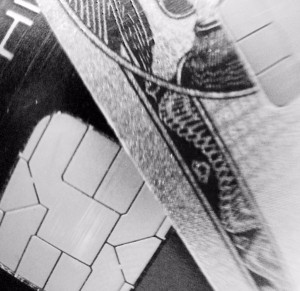 Watch out—the future has arrived. And they call it EMV. As the target date for businesses to accept EMV payment cards draws near, make sure your business is ready to transition seamlessly from magnetic stripe cards to EMV. October 1st is upon us. Are you ready?
Watch out—the future has arrived. And they call it EMV. As the target date for businesses to accept EMV payment cards draws near, make sure your business is ready to transition seamlessly from magnetic stripe cards to EMV. October 1st is upon us. Are you ready?
This list of FAQs will help you answer lingering questions and stay abreast of new developments with EMV technology.
What does EMV stand for?
It is an acronym for its developers Europay, Mastercard and Visa.
What’s the main difference between the cards we use now and EMV cards?
Magnetic stripe cards are the cards currently used in the United States and have a magnetic strip on the back. These cards are swiped through a card reader and contain static financial information that can be easily duplicated by card readers. EMV cards, on the other hand, contain a microchip that produces a new code with each transaction, preventing fraudsters from gaining access to sensitive data on the card. EMV cards are therefore more secure than magnetic stripe cards, and are responsible for a worldwide decrease in fraud.
How will switching to EMV directly benefit my business?
Great question. EMV will benefit your business threefold. First, your risk of chargebacks based on fraudulent transactions is greatly reduced. Whereas banks bore the brunt of the financial weight for fraud in the past, companies that have not adopted EMV technology will now be held accountable starting October 1st, when the liability shift starts. Adopting EMV technology will protect your business from costs associated with fraud. Second, as technology evolves faster than you can say Darwin, EMV is simply the beginning. Most of the hardware that accepts EMV will also allow your business to accept payment innovations such as mobile apps (i.e. mobile couponing and loyalty programs) and contactless payments. Third, you will be able to accept payment from visitors from other countries. Much of the world has already adopted this technology and no longer uses magnetic stripe cards. So prepare your business to increase profits by switching to a payment technology that more people can use.
I’ve been hearing the term “liability shift” a lot lately. What exactly is it?
It is when liability for card fraud switches from banking institutions to merchants. On October 1, 2015, businesses that aren’t updated to accept EMV cards will be held responsible for card swiped transactions on EMV capable cards that are found to be fraudulent. And penalties can be costly, particularly for small businesses. However, if your business is EMV-compatible, you will not be held accountable for fraudulent transactions.
As a small business owner, every penny counts. How much will it cost me to install an EMV-capable terminal?
EMV card readers cost between $400 and $700 but are often discounted through payment processors such as COCARD. Speak with us today—your EMV solution might even be free.
One thing to remember is that as the United States fully transitions to using EMV technology, cards will include both the microchip and magnetic strip. The process is expected to take anywhere between three and five years.
COCARD aims to develop our reputation as experts on EMV. We will continue to keep you posted on new developments and new ways of looking at this groundbreaking technology.
Read MoreRead MoreThe Basic Guide to EMV
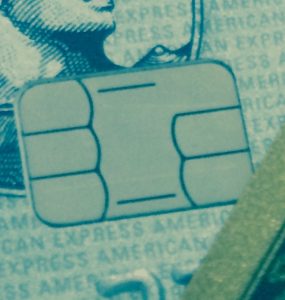 Maybe you’ve already gotten a glimpse; a customer pulls a credit card out of his or her wallet, and as they swipe, you see a chip that’s embedded in the card. Don’t freak out. You don’t have to work at Google to get it. You just have to understand a few simple points about this new chip.
Maybe you’ve already gotten a glimpse; a customer pulls a credit card out of his or her wallet, and as they swipe, you see a chip that’s embedded in the card. Don’t freak out. You don’t have to work at Google to get it. You just have to understand a few simple points about this new chip.
Let’s demystify the mystery, decode the data, and simplify the complexity of EMV.
Use these tips as a basic guide to bring your company into a new era of safer, more secure transactions.
• Update, update, update. EMV technology is new to the US, and the truth is that not all POS machines are already EMV-capable. What this means is that you should check both your hardware and software to see which components (whether some or all) should be updated, which brings us to our next point.
• Stay connected with all parties involved. No EMV machine is an island unto itself. Your POS system requires cooperation with your bank, processor, and other individuals or companies connected to your POS system. Find out what they have to say about EMV to stay current with any updates regarding the technology. It will allow for a more seamless transition.
• Think smart. Plan ahead, and stay one step ahead of the game. Once you’ve got the ball rolling on updating your POS system, consider other ways in which your system can stay smart. This includes considering a cloud-based POS or tablet solution like Revonu POS by COCARD.
• Consider COCARD. If you are considering a POS provider, we have a number of options available for POS systems and can help you decide if a new system is right for you.
• Carry an umbrella. You should always plan for a rainy day. Although it’s unlikely, there is always the slight possibility that your POS will break down. It isn’t fair, we know; but stuff happens. You should make a back-up plan to prepare for the off chance of the unexpected. Did you know that the Revonu package by COCARD includes a FREE EMV terminal?
• Teach your employees to fish. We promise, this is the last metaphor. Here at COCARD, we believe that employees should be trained in the ways of EMV. That means that they should understand the technology and know how to use it. After all, having truly knowledgeable employees makes the company look good.
So that’s it, six key points to remember about EMV. As you continue to learn more about this new technology, use this as a basic guide during your company’s transition to EMV.
The EMV experts at COCARD are available to answer any questions you may have!
800-317-1819 or support@cocard.info
EMV and the Challenges that Face Payment Processing
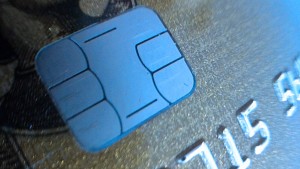
EMV and the Challenges that Face Payment Processing
In order for a business to run successfully, the simple act of paying for a product or a service using a credit card or a debit card should be efficient, fast, and most importantly, safe. And because it is money that is at stake here, there are a lot of regulations in place to make sure that the processing of payments using a card is safe and secure. One of the ways that makes card payments more secure is the EMV technology, where payment cards used in an ATM and POS terminals have been embedded with microchips. This form of payment technology has long been in use and is widely accepted in many regions such as Europe, Canada, and Asia Pacific. Ironically, the US – considered to have the largest number of plastic card users – is one of the countries that have not – yet – fully optimized this otherwise global standard.
The Advantages of EMV
Note that an EMV-embedded chip is a lot more secure than the traditional magnetic stripe method, especially when it comes to face-to-face credit/debit card transactions. Theft and credit card fraud is rampant now more than ever, but using this embedded chip has added another layer of protection against consumer fraud. Once the card has been inserted into a terminal, the payment will then be authenticated and processed using the EMV network. Also, the chip contained within the card is hard to duplicate, making it very hard for swindlers to duplicate your customer’ cards.
What Does This Mean for You?
If you are in the process of upgrading your accepted payment methods, it is important that your POS terminal also be equipped with an EMV chip card reader. You will create more credibility and garner more customers in the marketplace by utilizing this more safe and secure payment method. There will be increased consumer confidence which will drive up more sales and increase your profits in the long run.
What Happens When You Don’t Update
There have been changes made to the EMV Liability Shift. Currently, if a payment processing transaction has been approved and it turns out to be fraud, the card issuer is the one that absorbs the loss. With the new rule, however, liability shifts to the merchant who has not implemented the EMV technology. If and when fraud happens, the responsibility falls on the party who makes the transaction – which means YOU, the business owner.
How to Prepare Your Business for EMV Migration
All you have to do is update your card reader. It’s that simple. If you upgraded your POS recently, then your terminal is most likely already EMV-ready. Whatever the case may be, all you have to do is contact CoCard and we’ll help you understand what changes you need to make to prepare your business for the EMV migration.
Improving on your current payment processing system is not that complicated – and with CoCard’s help you will be able to implement EMV into your business.
Read MoreRead MoreFive Tips for POS Security
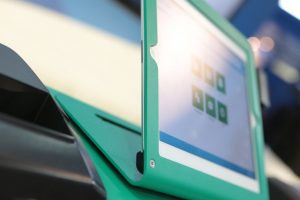 Point of Sales security is always a relevant issue for a merchant services provider. With the recent string of data breaches that have happened to well-known businesses like Target and Verizon, there are plenty of reasons to feel like your POS’s security system may not be up to snuff.
Point of Sales security is always a relevant issue for a merchant services provider. With the recent string of data breaches that have happened to well-known businesses like Target and Verizon, there are plenty of reasons to feel like your POS’s security system may not be up to snuff.
Although hackers are becoming better each day at getting access to essential data, there are multitudes of ways to help toughen the process for a determined hacker. The two major forms of hacking involve either the use of an attachable hardware device to the POS system, or using malware to hack into a POS network. Although there is no surefire way to prevent either of these things from happening, here are five tips that will help improve the security of your POS system.
- Always maintain the most up-to-date POS software.
POS system updates can be a drag, but oftentimes these updates provide crucial security patches that ward off malware and other hacking technology. Rather than updating technology quarterly, update the technology as frequently as possible. It’s hard to stay a step ahead of cybercriminals, but if you’re always improving, it makes the task more difficult.
CoCard provides cutting-edge POS services, featuring top-notch security and management tools.
- Install Firewall and Anti-Virus Software to boost your network’s immunity.
Similar to keeping up-to-date POS Software, installing new Firewall/Anti-virus software is critical. It adds an extra dimension to the security system already in place at your firm, and puts yet another wall between you and a potential hacker. Programs like Barracuda and McAfee are good choices.
- Create intricate passwords that are frequently changed.
This is an extremely overlooked habit that should always be practiced. Many times, hackers have no problem getting past security systems because the passwords in place are entirely too simple and intuitive. Always change from the default password that was provided for your system, and never make it something simple like “Password1” or your birth date. Find something that isn’t easily guessed, and change the password frequently, preferably every two or three months.
- Deny internet access from POS Stations and Terminals.
Keeping POS computers off the internet vastly reduces the risk of viruses and other internet-based malware. Only connect your system to the internet for necessary POS activities, and avoid general internet usage. Don’t give a hacker the chance to get to you by staying clear of their sights.
- Disable Remote Access.
Although we get accustomed to allowing IT professionals and employees to use the POS system from remote locations (not necessarily in office), hackers have a far easier time finding your device’s information when it is used away from a terminal. Restrict access to programs as much as possible, and you have vastly decreased your risk for hacking.
Although none of these solutions are fool-proof, they are steps that over time can make a big difference in your program’s safety. When thousands of potential clients’ credit information is in your hands, why take the risk? Just like you take vitamins to protect your immune system, take precautions to protect your POS system!
Read MoreRead MoreAre You Ready for EMV?
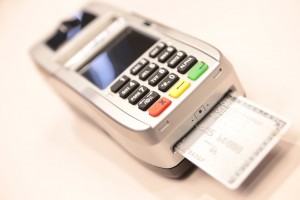 You are probably hearing a lot about EMV in the news and maybe even receiving a few scary calls from merchant service providers who imply that EMV has something to do with PCI Compliance. For the record EMV has NOTHING to do with PCI Compliance and no matter what software you are running on your POS COCARD can manage your EMV. Relax, COCARD is ready for EMV and we are here to help YOU be ready too.
You are probably hearing a lot about EMV in the news and maybe even receiving a few scary calls from merchant service providers who imply that EMV has something to do with PCI Compliance. For the record EMV has NOTHING to do with PCI Compliance and no matter what software you are running on your POS COCARD can manage your EMV. Relax, COCARD is ready for EMV and we are here to help YOU be ready too.
A little background: EMV stands for Europay, MasterCard and Visa; it is the global standard for cards equipped with computer chips and the technology used to authenticate chip-card transactions. Have you heard about all the data breaches in the last few years? EMV is the card association’s answer to these breaches, the technology has been used in Europe for more than 10 years and they have seen a drastic reduction in credit card fraud.
What happens?
In the beginning your exposure will be minimal because the only liability for fraud will be with cards that have chips implanted. However, as time goes on, and if EMV becomes the new standard, your exposure will increase. If a chip card is used at a business that has not changed its system to accept chip technology and this chip card is fraudulent then the counterfeit card can be successfully used and cost of this fraud will fall back on the merchant.
What does this new technology mean to your business?
The switch to EMV means adding a new in-store technology to your current processing system or not. Chances are you may already be EMV ready but in either case don’t worry, COCARD is here to help! Most importantly the EMV technology means greater protection against fraud in your business.
For ongoing updates and the most current information about EMV, PCI, card association updates and fraud alerts like us on Facebook and follow us on Twitter.
Read MoreRead MoreWhere Do You Stand?

How do you react when you are outside of your comfort zone? Are you a natural at mingling and an ace at taking the stage? Or do you cringe just thinking about the prospect?
Whether you’re a social butterfly or have a proclivity toward being shy, social psychologist Amy Cuddy claims you can influence how people perceive you—confidence levels, leadership skills, friendliness, and competence based solely on your body language.
Here, a few interesting takeaways from Cuddy’s 2012 TED Talk:
1. Others judge us based on our body language. Closed and withdrawn positions are often associated with inferiority or passivity, while triumphant, confident poses are linked with power.
2. How we see ourselves can be influenced by our own body language.
3. Pretending to feel certain emotions by posturing (forcing a smile or placing hands confidently on the hips) can lead us to actually feel said emotions.
4. Adopting powerful body language can change us on a physiological level (triggering testosterone and cortisol levels).
5. Tiny tweaks can lead to big changes. Cuddy suggests holding a strong, dominant posture for two minutes before heading into a potentially stressful situation, like a job interview.
To view Cuddy’s presentation in full, click here.
Read MoreRead MoreBack to School Trends

You loaded up the kids on school supplies weeks ago… but don’t think you’re finished with back-to-school prep just yet. You’ve still got the season’s fashion trends to consider for your teen or tween. As is the case with every school year, last year’s looks have hibernated after the long summer and have ushered in a fresh new palette of colors, textures and themes.
According to Teen Vogue, fall girls’ fashion will incorporate plenty of plaids, wools, oversized cardigans, fringe, pastels, layered looks, ’90s throwback (including lots of denim on denim) and ’60s Chelsea girl mod (shift dresses, cat-eye makeup). High-waisted jeans are in for girls too (previously dubbed “mom jeans”). Guys meanwhile are leaning more fashionable than past years, sporting preppy-meets-bad-boy apparel.
Blazers, denim jackets and leather jackets are back in, as are skinny khakis, bright-hued denim and patterned slip-on sneakers. Backpacks will likely need replacing, and this year’s stock is all about colorful prints and patterns. Don’t be surprised if your student asks for a new iPhone cover too (even though his old one is perfectly fine); smartphone cases are big venues for personalization.
Read MoreRead More



